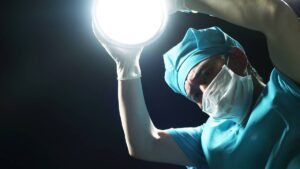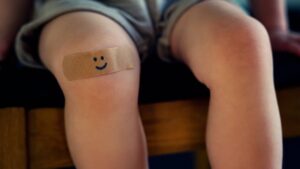Health Check: Investor hearts pump as EBR girds for US approval of novel pacemaker leads

Pumped-up EBR points to imminent FDA approval. Pic via Getty Images
- EBR expects US approval of its Wise wireless pacemaker lead by April 13
- Cogstate benefits from bolstered funding for US clinical trials
- Investors vie over the future of Percheron Therapeutics after its trial flop
EBR Systems (ASX:EBR) expects the US FDA to approve its novel Wise pacemaker lead “on or before” April 13, with a commercial launch in the December half.
The company’s confident guidance follows the FDA’s pre-marketing inspection of EBR’s US manufacturing facilities, which resulted in no outstanding concerns.
The world’s only wireless cardiac pacing device for heart failure, Wise obviates the problem of dodgy pacemaker leads failing to last the distance.
The initial product is designed to eliminate the need for coronary sinus leads to stimulate the left ventricle in heart failure patients requiring cardiac resynchronisation therapy.
Future products potentially address wireless endocardial stimulation for bradycardia and other non-cardiac indications, the company says.
“We are very pleased with the successful conclusion of the FDA’s pre-approval inspection audit,” says EBR chief John McCutcheon.
“These audits are very rigorous, and the result is a clear indication of our team’s commitment to following good manufacturing practices.”
He says that while the FDA does not commit to precise approval dates – it’s not that silly – “there is every indication that [before April 13] this is a likely timeline.”
Today, EBR also said Wise had been accepted as one of the first five technologies in a US process that provides a faster path to a national reimbursement coverage for a medical device.
The program in question is under the auspices of the public reimbursement gatekeeper, the Centers for Medicare and Medicaid Services and pertains to devices with FDA breakthrough device designation status – such as Wise.
Obtaining reimbursement from public and private insurers is just as important as winning approval in the first place.
Clinical trial growth is a no-brainer for Cogstate
Among a cluster of revenue-generating healthcare stocks revealing their quarterly or half-yearly wares, brain monitoring group CogState (ASX:CGS) partly attributed improved US biotech funding conditions to a 19% surge in December half revenue, to US$23.9 million.
This suggests that investors don’t fear the quixotic incoming US health secretary Robert F Kennedy Junior and may even welcome him shaking up the joint.
Or maybe your columnist is just extrapolating too much after a couple of weeks’ furlough.
Cogstate is best known for its eponymous concussion test administered to groggy footballers on the sidelines.
But in reality, US$22.7 million of the revenue derived from its involvement in neurological related clinical trials for drug developers.
With more funding available, the number of studies is burgeoning and the company reports new trial contacts of US$20.3 million, up 86%.
Cogstate has focused on Alzheimer’s disease studies, which contributed US$14.2 million of revenue (up 112%).
But the company is pursuing other indications, with half of the 99 trials on its books related to paediatric and rare diseases.
The company also hints that profits have been sustained, pointing to gross profit and underlying earnings (ebit) margins being “consistent” with those in the June (second) half.
Our gut feeling is that Biome is doing well
Having pre-announced its December quarter revenue on January 6, Biome Australia (ASX:BIO) today released the Full Monty version showing underlying earnings of $234,000, up 92% on the September (first) quarter.
For those not paying attention a couple of weeks ago, sales revenue grew 41% year-on-year, to $4.61 million.
Having been ebitda positive over the last four quarters, Biome expects to post its maiden net profit in February’s half-year results.
Biome’s products are based on probiotics, which are micro-organisms that are claimed to benefit the gut when ingested.
Biome’s flagship activated probiotics range covers anything from acne and eczema to irritable bowel syndrome and cholesterol.
Last September Biome outlined ambitious plans to bolster its sales to a cumulative $75-85 million in the next three years, compared with a cumulative $22.5 million in the past three years.
Biome Australia chief Blair Vega Norfolk today said the company was “well on track” to hit this target, as outlined in the company’s Vision 27 strategic plan.
Investors draw battle lines as Percheron goes data mining
Trading at not much around cash backing since last December’s spectacular failure of its Duchenne muscular dystrophy (DMD), Percheron Therapeutics (ASX:PER) is now enveloped in corporate intrigue.
On January 7, the company revealed a cabal of investors had requisitioned a shareholder meeting to vote on removing chairman Dr Charmaine Gittleson and CEO Dr James Garner.
This is in favour of installing their own candidates, Greg Peters and Gennadi Koutchin.
On Friday, the Brisbane-based Powerhouse Ventures Ltd increased its Percheron holding from 5.05% to 7.36%.
As far as we can tell, Powerhouse is not linked with the ginger group seeking to remove the directors.
On December 18 Percheron said its phase IIb DMD trial of its lead drug candidate avicursen (ATL1102) failed its secondary endpoints and had been canned.
But on January 6 the company said it would analyse further data from the trial at “various points” in January, to be completed by the end of March.
“Companies in our position must have the courage to recognise futility when it occurs, and our assumption at this stage is that the drug will not move forward in DMD,” Garner said.
“However, we owe it to all those who have invested their time, money, energy and hope in avicursen for DMD to make sure that we do not abandon it prematurely.”
More broadly, the company is scouring for other clinical programs.
As of the end of September 2024, Percheron had cash of $8 million.
“We have already begun exploring opportunities that may provide a faster and more secure path to restoring shareholder value and we have initiated discussions with several potential partners,” Garner says.
Garner notes estimates that only 8% of drug candidates in phase I stage will be commercialised and DMD is a “particularly challenging” disease.
“We are not the first company whose drug candidate has failed to meet hopes expectations and, like so many of our peers, it falls to us now to adapt and reorient our business so as to place it back on the path to success.”
At Stockhead, we tell it is as it is. While EBR Systems is a Stockhead client it did not sponsor this article.
Related Topics

UNLOCK INSIGHTS
Discover the untold stories of emerging ASX stocks.
Daily news and expert analysis, it's free to subscribe.
By proceeding, you confirm you understand that we handle personal information in accordance with our Privacy Policy.








